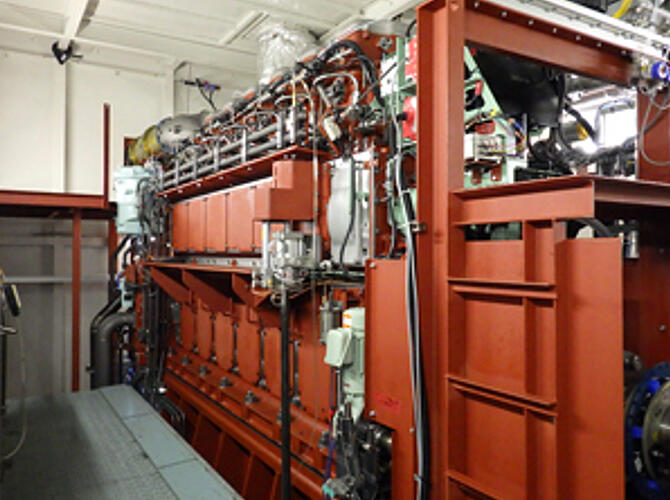On May 16, the New Energy and Industrial Technology Development Organization (NEDO) announced that it had started testing the use of fuel ammonia having an 80% co-firing ratio in the world's first ammonia-fueled four-stroke marine engine, which is scheduled to be installed on an actual vessel. This was undertaken as a part of its Green Innovation Fund project "Next-Generation Ship Development", which aims to develop an ammonia-fueled marine engine. IHI Power Systems is in charge of the development of the engine.

Provided by IHI Power Systems Co., Ltd.
In October 2020, the Japanese Government declared that it will become carbon neutral by 2050. To achieve carbon neutrality in marine transportation, it is essential to switch from existing fuels, such as heavy oil, to hydrogen and ammonia. Therefore, it is crucial to develop marine engines that use such fuels.
In this regard, as part of NEDO's Green Innovation Fund project "Next-Generation Ship Development", IHI Power Systems is working on the development of a four-stroke marine engine for use as the main propulsion engine for small and medium-sized ships and as an auxiliary power generator for large ships.
Ammonia is a zero-emission fuel that does not emit CO2 during combustion. However, it suffers from issues such as combustion resistance, corrosiveness, and toxicity. In particular, the combustion resistance of ammonia has hindered its use as an engine fuel.
In response, IHI Power Systems has established a technology for the stable combustion of ammonia in four-stroke marine engines by utilizing its expertise in the development of gas engines that use low calorific value gas made from wood chips as fuel. Furthermore, for the first time in the world, an actual engine to be installed on a ship (A-Tug) was used, and an ammonia fuel co-firing test with an ammonia fuel ratio of 80% was initiated.
In the demonstrations to date, the system has been operated in combination with peripheral equipment such as post-treatment equipment for the exhaust gas generated during combustion.
As a result, the group wase able to reduce emissions of dinitrogen monoxide (N2O), with a greenhouse effect approximately 300 times that of CO2, and unburned ammonia to nearly zero, confirming the reduction of greenhouse gas emissions through the use of ammonia fuel.
In the future, the group will conduct ammonia co-firing tests under various conditions over a period of about one year to further improve the co-firing ratio, significantly reduce greenhouse gas emissions, and confirm the quality and safety of the system before installing it on an actual ship. Their goal is to ensure the completion of the actual vessel and to start commercial operation in 2024.
This article has been translated by JST with permission from The Science News Ltd. (https://sci-news.co.jp/). Unauthorized reproduction of the article and photographs is prohibited.




